Almond Pests and Diseases: [List and How to Fight Them]
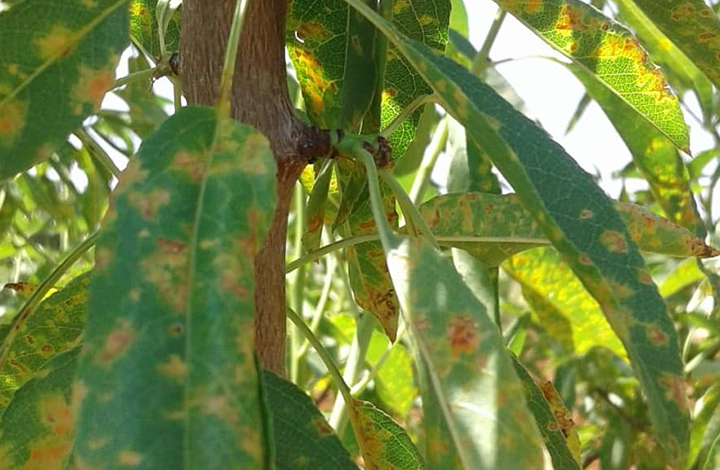
The almond tree is a tree that can measure up tothree to five meters high. It is characterized by having lilac to white flowers .
It is an ideal tree to have at home since its fruits are almonds that provide great nutritional benefits. However, like any tree, it is not immune to pests and diseases.
moniliosis
It is a very aggressive disease for the almond tree. The first visible symptoms isa noticeable desiccation of the flowers. It is a grayish fungus that begins to attack from the center of the flower, spreading until it causes total death.
Normally, the attacked areas harden and stick to the tree for a period of several months.
Treatment
It is better to avoid this pest with preventive measures.control by adding fungicidesa little before the start of flowering and throughout this period. It is also important to be providing the tree with fertilizer and the necessary nutrients so that it can defend itself.
Likewise, it is recommended that you prune the tree and if you identify an infected area, remove it immediately. There are other chemical methods to eradicate this fungus, they are usually aggressive but effective in eradicating the problem.
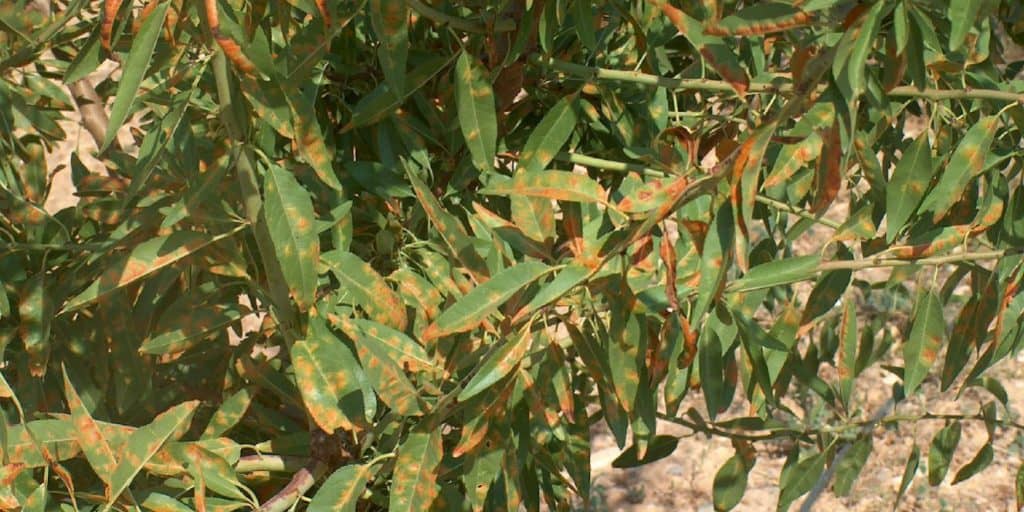
almond leprosy
This pest is also known as leaf dent and iscaused by a fungus. This disease causes the deformation of the leaves, especially the youngest ones. It causes the thickening of the veins and later of the leaves.
They also tend to have a whitish-green color as well as bright pink and red. In slightly more advanced stages, the leaves begin to fall, the fruit is deformed, the growth of the tree stops and the deformed leaves usually attract other pests such as aphids.
Treatment
To treat it there are many options of fungicides and bactericides available in the market.
For more information on how to combat this disease: Here 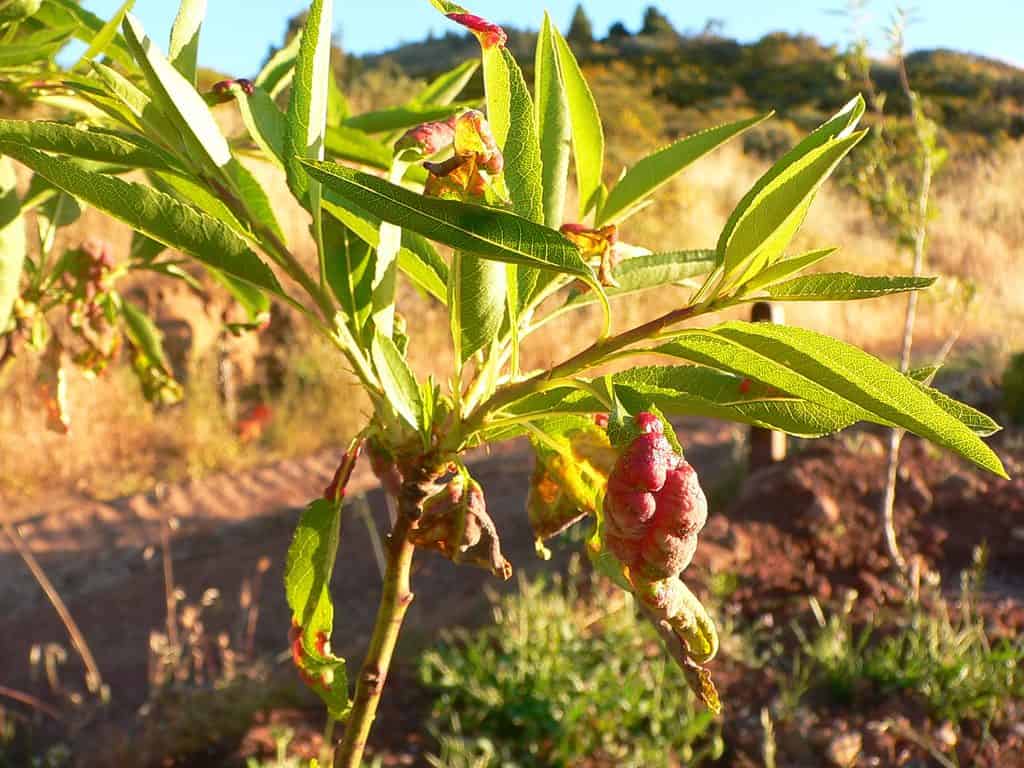
almond tree screening
This pest is also caused by a fungus, but this time the symptoms are pink spots on the leaves. Later, they fall off and leave small holes all over the leaf.
They also often spoil the fruit and, therefore, the harvest. It is common to attack in spring and autumn, however, it can be very resistant and survive past the winter.
Treatment
To prevent these pests, it is essential to have the almond tree well nourished and without excess moisture, since it is the ideal environment for many fungi.
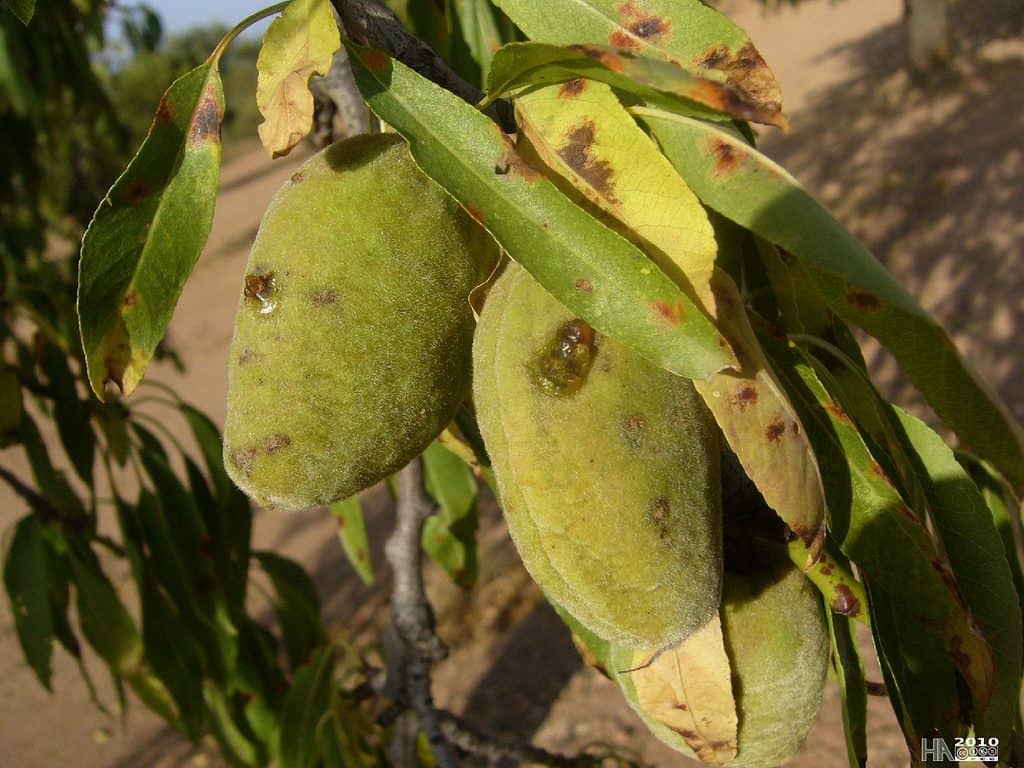
almond miner
This worm mainly attacks the shoots and can become a very aggressive pest. The larvae can also feed on the fruit by devouring it from the inside and destroying the seed. Usually the pest hits hardest on young trees.
Treatment
To end the plague it is important to remove the damaged shoots as soon as possible. If it has already spread throughout the tree, chemical control can be used.

Bacterial almond spot
This pest is caused by a bacterium that thrives mainly in very wet or waterlogged areas. It has become quite widespread and is in quarantine status in the European Union. It is very serious, so laboratory confirmation is needed to completely eradicate the almond tree.
It is possible to confuse it with other pests caused by bacteria or fungi.
On the sheets you can see small spots on the front and back. The leaves turn brown, yellow and green. The fruits are also affected by the fall of the petals and the presence of brown spots that can be concentrated and look like rotten areas.
Treatment
Its treatment varies according to the affected species. Sulfur compounds have been found to be effective. However, it is preferable to go to your local Plant Protection Center. 

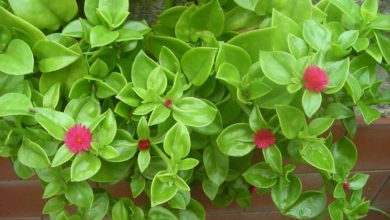

![Photo of Marula Tree: [Planting, Care, Harvest, Irrigation and Characteristics]](https://www.complete-gardening.com/wp-content/uploads/2022/08/marula-tree-planting-care-harvest-irrigation-and-characteristics-390x220.jpg)
![Photo of Cultivate Amarliys: [Care, Planting, Irrigation and Substrate]](https://www.complete-gardening.com/wp-content/uploads/2022/08/cultivate-amarliys-care-planting-irrigation-and-substrate-390x220.png)